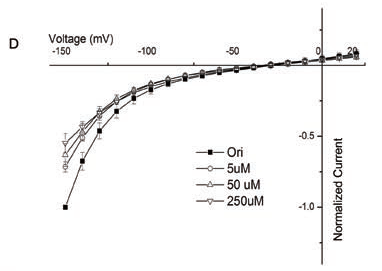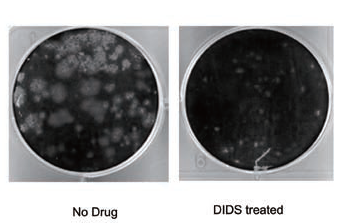A research team led by Prof. Sun Bing, at Institute Pasteur of Shanghai (IPS), Chinese Academy of Sciences, found that an chloride channel inhibitor, DIDS could significantly block the viral production and CPE induced by enterovirus 71(EV71) which may target the 2B ion channel protein of this virus.
EV7 is one of the major pathogens that cause hand, foot and mouth disease (HFMD), primarily in infants and young children. In recent years, epidemics and sporadic outbreaks of neurovirulent EV71 infections have been reported in many countries and regions in Asia. However, there is no effective antiviral treatment against severe EV71 infections, and no vaccine is available. During their lifecycle, viruses can induce many changes in their host cells, including increased plasma membrane permeability. These viral ion channel proteins were generally regarded as a good target for potential anti-viral drugs.
In this study, the researcher reported that the 2B protein from EV71 can form homotetramer and was mainly located on Golgi complex. In a Xenopus oocytes system, 2B may mediate a chloride-dependent current in oocytes, and DIDS, an inhibitor of this current, blocked virus-induced CPE in RD cells and the intracellular viral RNA level was also significantly diminished. This study provides a new approach foridentifying potential anti-EV71 drugs. Moreover, understanding the properties of the 2B protein as an ion channel may help shed light onthe life cycle of this virus.
This study was in collaboration with Prof. Qi Jin at Institute of Pathogen Biology, Chinese Academy of Medical Sciences. This work was supported by the Grants from Chinese Academy of Sciences, Ministry of Science and Technology, National Natural Science Foundation of China, Science and Technology Commission of Shanghai Municipality, National Science and Technology Major Project of the Ministry of Science and Technology of China, Shanghai Pasteur Health Research Foundation and Li Ka Shing Foundation.
A B

A. The current in an oocyte expressing 2B-HA was suppressed by DIDS treatment.
B. A plaque assay was performed in EV71 virus infected host RD cells and the plaques are reduced by DIDS treatment in the cells.

